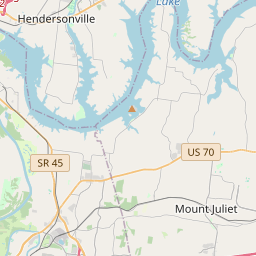The Civil War In Lebanon
Historical marker location:






Caught in the Crossfire
April 12, 1861: The Civil War begins with the Confederate attack on Fort Sumter, located in South Carolina's Charleston Harbor.
April 15, 1861: President Abraham Lincoln issues a call for 75,000 volunteers to serve in the Union Army to suppress the rebellion.
May 24, 1861: The first major land battle, known as the First Battle of Bull Run (or First Battle of Manassas), takes place in Virginia. It ends in Confederate victory.
September 17, 1862: The Battle of Antietam in Maryland becomes the bloodiest single-day battle in American history, with heavy casualties on both sides. The Union forces, commanded by General George McClellan, manage to halt Confederate General Robert E. Lee's advance into Union territory.
January 1, 1863: President Lincoln issues the Emancipation Proclamation, declaring that all slaves in Confederate-held territories are to be set free. However, the proclamation does not immediately free all slaves in the United States.
July 1-3, 1863: The Battle of Gettysburg in Pennsylvania takes place, resulting in a significant Union victory and inflicting heavy casualties on Confederate forces. It marks a turning point in the war.
November 19, 1863: President Lincoln delivers the Gettysburg Address, emphasizing the principles of liberty, equality, and the preservation of the Union.
April 9, 1865: General Robert E. Lee surrenders to Union General Ulysses S. Grant at Appomattox Court House in Virginia, effectively ending the Civil War.
April 14, 1865: President Lincoln is assassinated by John Wilkes Booth while attending a play at Ford's Theatre in Washington, D.C.
May 10, 1865: Confederate President Jefferson Davis is captured, signaling the collapse of the Confederate government.
December 6, 1865: The Thirteenth Amendment to the United States Constitution is ratified, officially abolishing slavery throughout the country.
While this timeline provides an overview of key events, it is important to note that the Civil War spanned over four years, from 1861 to 1865, and encompassed numerous battles, campaigns, and political developments that shaped the course of American history.
The Oak Ridge National Laboratory, located in Oak Ridge, Tennessee, played a crucial role in the development of the atomic bomb during World War II. It was also a key site for nuclear research during the Cold War.
European settlers began arriving in the late 1700s, with the Cumberland Settlements founded by early pioneers such as James Wilson and his wife, Rachel Donelson, for whom the county is named. The settlement grew rapidly, attracting more settlers and becoming an important trading center.
During the early 19th century, Wilson County played a significant role in the development of the state's transportation system. With the construction of the Cumberland Turnpike, which connected Nashville to the eastern part of the state, the area became a crucial stop for travelers and merchants.
In the mid-19th century, Wilson County experienced the impacts of the American Civil War. Having a strategic location between the Union-controlled Nashville and the Confederate stronghold of Chattanooga, the county witnessed various skirmishes and battles. The Battle of Stones River, fought in nearby Rutherford County, also had a significant impact on Wilson County, as troops from both sides passed through the area.
Following the war, the county began to rebuild its economy and infrastructure. Agriculture, particularly tobacco and corn farming, became the mainstay of the local economy. The construction of the Nashville and Knoxville Railroad in the late 19th century further stimulated economic growth and connected the county to broader markets.
In the 20th century, Wilson County continued to evolve, with advancements in industry and education. The establishment of the Cumberland University in 1842 enhanced the county's educational landscape, while industries such as textiles, manufacturing, and automotive assembly plants provided employment opportunities.
Present-day Wilson County is a vibrant and growing community, known for its picturesque countryside, historic landmarks, and strong sense of community. The county's rich history is celebrated through various festivals and events, which highlight its cultural heritage and enduring spirit.
Wilson County Timeline
This timeline provides a glimpse into the major events and milestones that have shaped the history of Wilson County, Tennessee.
- 1799 - Wilson County is established by the Tennessee General Assembly
- 1802 - The county seat is established in Lebanon
- 1812 - The county courthouse, known as the "Old Courthouse," is built in Lebanon
- 1838 - The county's first railroad, the Nashville and Lebanon Railroad, is completed
- 1861 - Wilson County secedes from the Union and joins the Confederacy during the American Civil War
- 1865 - The community of Watertown is incorporated
- 1916 - The county's first high school, Lebanon High School, opens
- 1936 - The construction of the Percy Priest Dam begins, creating Percy Priest Lake
- 1968 - The Cedars of Lebanon State Park is established
- 1990 - The population of Wilson County reaches 55,498